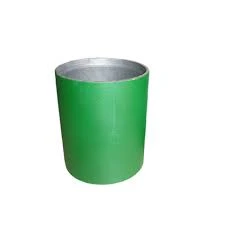- Afrikaans
- Albanian
- Amharic
- Arabic
- Armenian
- Azerbaijani
- Basque
- Belarusian
- Bengali
- Bosnian
- Bulgarian
- Catalan
- Cebuano
- Corsican
- Croatian
- Czech
- Danish
- Dutch
- English
- Esperanto
- Estonian
- Finnish
- French
- Frisian
- Galician
- Georgian
- German
- Greek
- Gujarati
- Haitian Creole
- hausa
- hawaiian
- Hebrew
- Hindi
- Miao
- Hungarian
- Icelandic
- igbo
- Indonesian
- irish
- Italian
- Japanese
- Javanese
- Kannada
- kazakh
- Khmer
- Rwandese
- Korean
- Kurdish
- Kyrgyz
- Lao
- Latin
- Latvian
- Lithuanian
- Luxembourgish
- Macedonian
- Malgashi
- Malay
- Malayalam
- Maltese
- Maori
- Marathi
- Mongolian
- Myanmar
- Nepali
- Norwegian
- Norwegian
- Occitan
- Pashto
- Persian
- Polish
- Portuguese
- Punjabi
- Romanian
- Russian
- Samoan
- Scottish Gaelic
- Serbian
- Sesotho
- Shona
- Sindhi
- Sinhala
- Slovak
- Slovenian
- Somali
- Spanish
- Sundanese
- Swahili
- Swedish
- Tagalog
- Tajik
- Tamil
- Tatar
- Telugu
- Thai
- Turkish
- Turkmen
- Ukrainian
- Urdu
- Uighur
- Uzbek
- Vietnamese
- Welsh
- Bantu
- Yiddish
- Yoruba
- Zulu
coupling for tubing
Understanding Coupling for Tubing Importance and Applications
Coupling, in the context of tubing, refers to the process of connecting two sections of tubing seamlessly to ensure the efficient flow of fluids or gases within various applications. This essential component plays a critical role across multiple industries, including oil and gas, pharmaceuticals, and manufacturing. The design, material selection, and overall functioning of tubing couplings are crucial for maintaining integrity, efficiency, and safety in operations.
In the oil and gas industry, the use of tubing is prevalent, and the demand for reliable couplings has significantly increased. These couplings serve as connectors between wellheads, pipelines, and downhole tubing systems. Their primary role is to allow for the safe transportation of crude oil, natural gas, and other fluids from underground reservoirs to processing facilities. The coupling must be robust enough to withstand the high pressures and corrosive environments typical of such applications. Often, couplings are made from high-strength steel or specialized alloys that provide both durability and resistance to environmental factors such as corrosion and temperature variation.
One important aspect of tubing couplings is their ability to form leak-proof seals. A failure in a coupling can lead to disastrous consequences, including environmental pollution, financial losses, and safety hazards for workers. Therefore, industry standards dictate rigorous testing and quality assurance protocols to ensure that each coupling meets the required specifications before being deployed in the field. The implementation of advanced technologies, including computer modeling and predictive maintenance, helps in assessing the reliability and longevity of coupling systems.
coupling for tubing

In the pharmaceutical industry, tubing couplings are also critical but serve a different purpose. In this sector, the flow of liquids must be meticulously controlled, and the possibility of contamination needs to be minimized. Couplings in pharmaceutical applications must often be compatible with a variety of sterilization methods and must not react with the solutions they come into contact with. The materials used in these couplings are subject to strict regulatory standards to ensure the safety and efficacy of the products being manufactured.
In manufacturing, couplings play an equally vital role, especially in systems involving fluid transfer and pneumatic applications. Here, couplings facilitate the connection between hoses, pipes, and machinery components. In such environments, the ease of installation and maintenance is paramount, as production downtime is costly. Quick-disconnect couplings are widely utilized in these scenarios as they allow operators to swiftly connect or disconnect tubing without the need for tools, thereby enhancing workflow efficiency.
The evolution of coupling technology has been remarkable. Innovations such as flexible couplings, which can accommodate misalignment between connected sections, or safety couplings, which incorporate features to minimize the risk of disconnect under pressure, have significantly improved the operational capabilities of various systems. Furthermore, advancements in manufacturing techniques, such as 3D printing, are paving the way for custom-designed couplings tailored to specific applications, enhancing performance and longevity.
In conclusion, coupling for tubing is a fundamental component that impacts various industries’ productivity, safety, and environmental responsibility. Whether in oil and gas, pharmaceuticals, or manufacturing, the right coupling can mean the difference between efficient operations and costly failures. As technology advances and industries evolve, the importance of reliable and innovative coupling solutions will undoubtedly continue to grow, driving further innovations in design and materials to meet ever-changing demands. Understanding the intricacies of coupling systems is essential for engineers and technicians working in these fields, ensuring that they can choose the right solutions for their specific needs. As we look to the future, the emphasis on quality, safety, and efficiency will remain at the forefront of coupling technologies in tubing applications.
-
Tubing Pup Joints: Essential Components for Oil and Gas OperationsNewsJul.10,2025
-
Pup Joints: Essential Components for Reliable Drilling OperationsNewsJul.10,2025
-
Pipe Couplings: Connecting Your World EfficientlyNewsJul.10,2025
-
Mastering Oilfield Operations with Quality Tubing and CasingNewsJul.10,2025
-
High-Quality Casing Couplings for Every NeedNewsJul.10,2025
-
Boost Your Drilling Efficiency with Premium Crossover Tools & Seating NipplesNewsJul.10,2025







